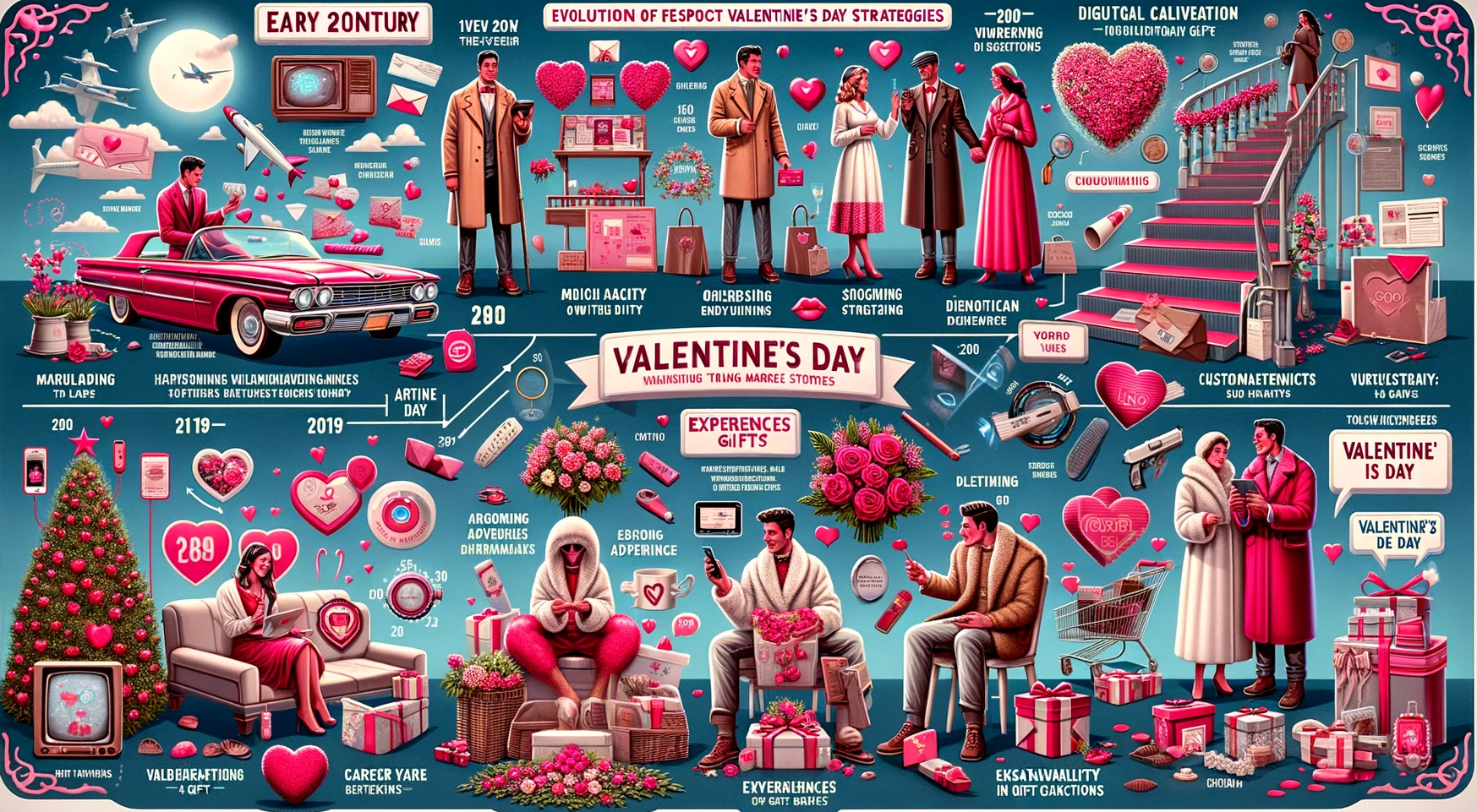As February 14th approaches, lovebirds and singles alike start to feel the buzz of Valentine’s Day. But it’s not just Cupid working overtime; marketers are also putting in the extra hours, crafting campaigns that capture hearts and open wallets. From the simple card exchanges of yesteryears to today’s immersive digital experiences, Valentine’s Day marketing has undergone a fascinating transformation. Let’s dive into this evolution and uncover how brands have turned this day of love into a marketing bonanza that not only boosts seasonal sales but also fosters long-term customer relationships.
From Hallmark to Hashtags: A Love Story
The Classic Era: Cards and Flowers
In the beginning, there were cards. Valentine’s Day marketing was a straightforward affair, with businesses focusing on the essentials: cards, flowers, and chocolates. These simple gestures of affection were marketed as the perfect way to express love, with print ads and in-store displays dominating the scene. Hallmark Cards, Inc., one of the pioneers, started mass-producing Valentine’s Day cards in 1913, setting the stage for the commercialization of the holiday.
The Televised Romance: Jingles and Jewels
As television became the dominant media form, Valentine’s Day marketing took a glamorous turn. Jewelers, perfumeries, and luxury chocolate brands seized the airwaves, using catchy jingles and heartwarming scenes to entice romantics. The message was clear: bigger and more expensive gifts were the ultimate expression of love.
Digital Cupid: Social Media and Personalization
The advent of the internet and social media brought a seismic shift in Valentine’s Day marketing. Brands began to leverage these platforms for more interactive and personalized campaigns. Hashtags, viral videos, and user-generated content allowed for a two-way conversation between brands and consumers. Companies like Tiffany & Co. launched Instagram campaigns encouraging users to share their love stories, blending product promotion with genuine emotional engagement.
New Age Love: Experiences and Inclusivity
Experience Over Material:
In recent years, the focus has shifted from material gifts to shared experiences. Marketers have caught onto the trend that many consumers, especially Millennials and Gen Z, value experiences over objects. Romantic getaways, spa days, and cooking classes have become popular Valentine’s Day gifts, with brands partnering with travel agencies, hotels, and local businesses to offer special deals.
Inclusivity and Self-Love:
Modern Valentine’s Day marketing embraces love in all its forms, including self-love, friendship, and the love of pets. Campaigns now cater to a wider audience, moving beyond the traditional romantic couple narrative. For instance, Galentine’s Day, a celebration of female friendship on February 13th, has become a marketing phenomenon, with businesses offering specials on brunches, gifts, and events.
Sustainability and Authenticity:
Eco-consciousness and authenticity are increasingly important to consumers. Sustainable gifts, such as ethically sourced chocolates and eco-friendly jewelry, are on the rise. Brands that can communicate genuine commitment to sustainability and social causes are more likely to win the hearts (and loyalty) of customers.
The Future of Valentine’s Day Marketing: Virtual Love and Beyond
As technology advances, so too will Valentine’s Day marketing strategies. Augmented reality (AR) and virtual reality (VR) offer new avenues for immersive experiences, from virtual flower bouquets to AR-enabled love notes. Personalization will reach new heights with AI-driven gift recommendations. Meanwhile, the importance of building a community and engaging customers year-round, not just in February, will become ever more crucial for long-term success.
Wrapping It Up with a Bow
The evolution of Valentine’s Day marketing reflects broader changes in society and consumer behavior. From Hallmark cards to hashtags, and now towards more inclusive, experience-based, and sustainable practices, the ways we express love and the strategies brands use to engage us have grown more sophisticated and diverse. As marketers continue to navigate these changing tides, the essence of Valentine’s Day remains the same: a celebration of love, in all its forms.
